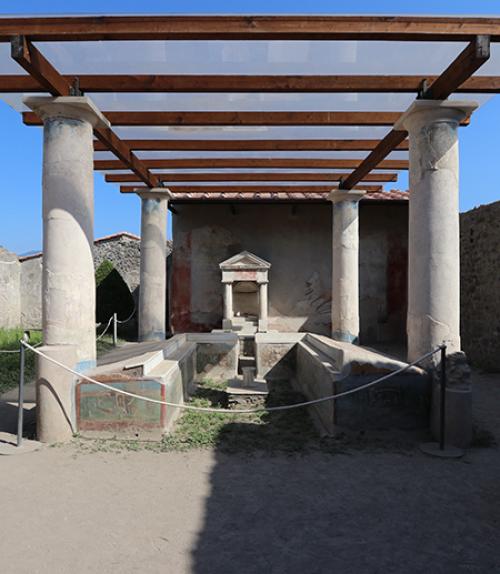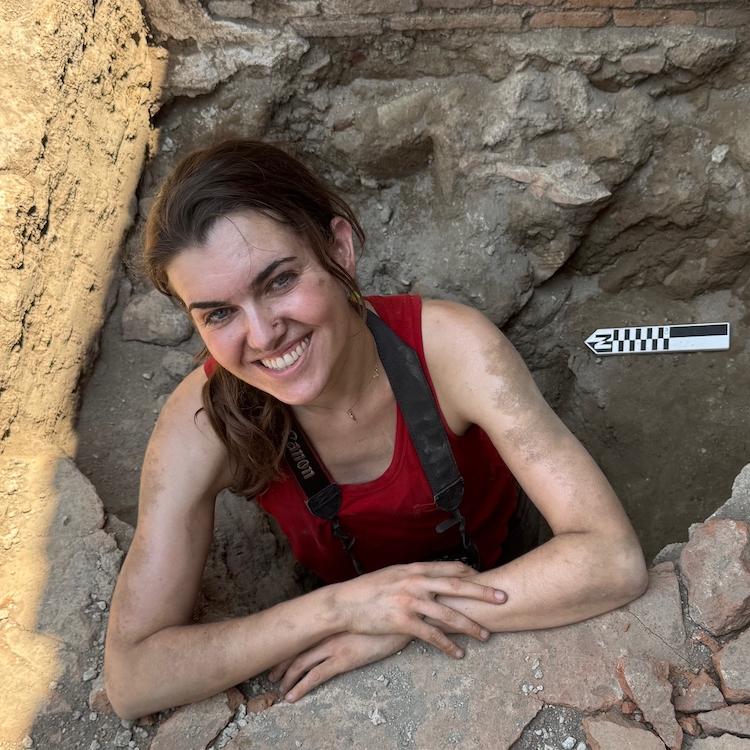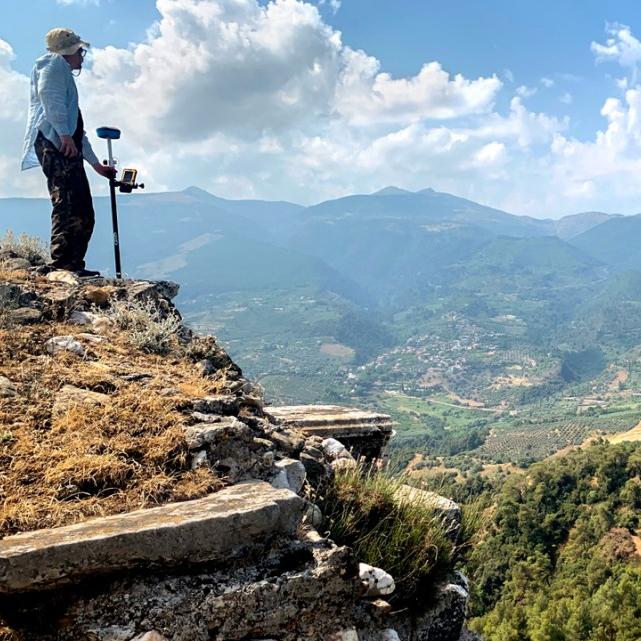
 Department Homepage
The College of Arts & Sciences
Department Homepage
The College of Arts & Sciences
New book explores images of Egypt in Roman domestic spaces
Photo right: Garden triclinium (outdoor dining benches) at the Casa dell’Efebo, a wealthy house in Pompeii. Paintings of Egyptian landscapes decorate the sides of the benches where people once reclined to dine, and an artificial canal once flowed between the benches. (Photo by Caitlín Barrett)




